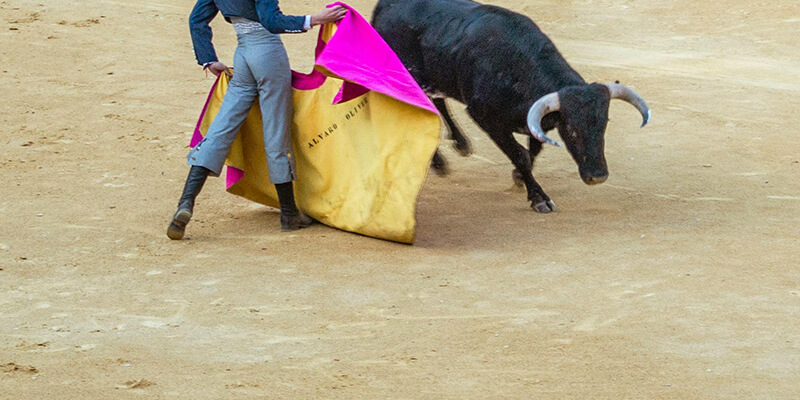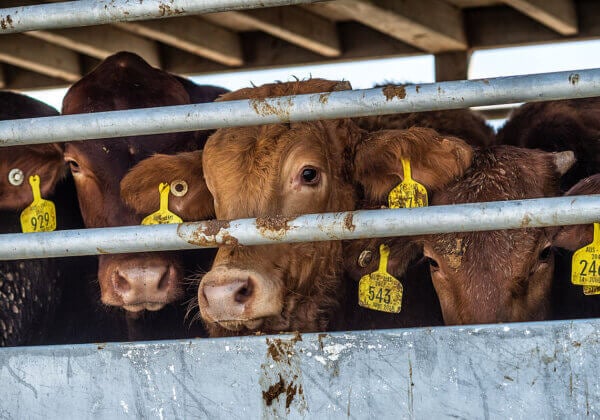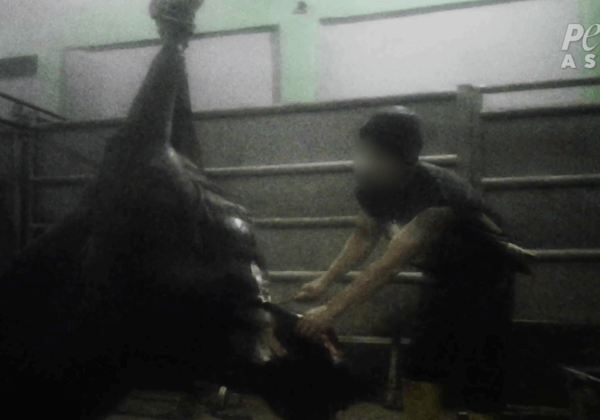Exposed: Chinese Dog-Leather Industry
PETA Asia’s undercover investigation shows terrified dogs as they are bludgeoned and then skinned.
The first thing the undercover investigator noticed was the overpowering smell of death. The filthy slaughterhouse floor was covered with blood and guts. Dog carcasses hung on hooks. This is the Chinese dog-leather industry. As you’ll see in the video footage taken during PETA Asia’s undercover investigation in eastern China, the cruelty is almost unimaginable as the dogs are led to the “kill” floor.
One dog after another is grabbed around the neck with metal pinchers before being bashed over the head with a wooden pole. Some fall unconscious, while others cry out and writhe in agony with severe head trauma. Some still struggle to breathe after their throats are cut and before their skins are ripped off.
Dogs who are next in line for slaughter wail and bark as a worker hits them in an effort to get them to walk slower. Many dogs are so terrified that they clamber on top of each other in a desperate bid to escape the holding area.
One worker is shown skinning the dogs, while another guts the animals. One employee told PETA Asia’s investigator that the facility bludgeons and skins 100 to 200 dogs a day and that at that time, there were about 300 live dogs in the compound awaiting slaughter.
A PETA Asia investigator visited dog-leather processing plants in China and documented the process of turning dog skin into women’s fashion gloves, work gloves, and other accessories. The owner of one plant told the investigator that at the time, he had about 30,000 pieces of semi-processed dog leather in stock.
Products made from dog and cat leather and fur exported to other countries throughout the world to be sold to unsuspecting customers. So if you wear fur or leather, there’s no easy way to tell whose skin you’re really in. And if you wouldn’t wear fur or leather from a dog, you shouldn’t wear skin from any animal, including leather from a cow!
Being sickened is not enough. Only actions will help these animals. Most of the world’s leather comes from China, where there are no penalties for abusing animals killed for their skins. So if you buy leather, remember: there’s no easy way to tell whose skin you’re really getting.




